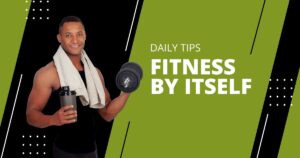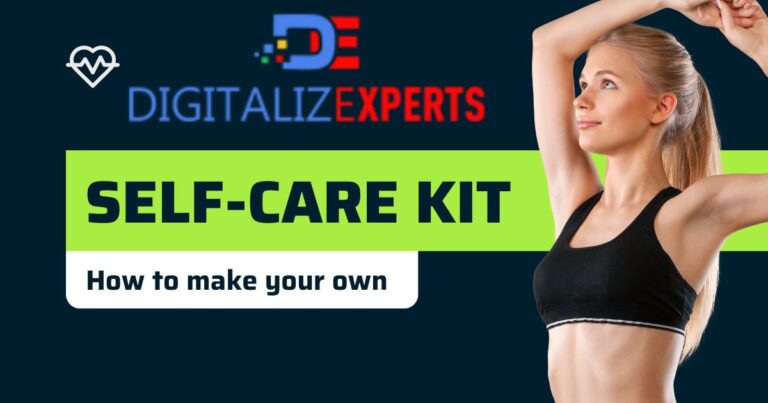Fitness for Busy Professionals: A Step-by-Step Guide to Staying Active and Energized
Staying fit as a busy professional might seem like an impossible task when your schedule is packed with meetings, deadlines, and constant responsibilities. But the good news is that with a little planning and smart strategies, you can make fitness a part of your everyday routine. This guide will take you step-by-step through the process of fitting exercise into your busy life while still keeping your energy and productivity high.
Step 1: Set Clear, Realistic Fitness Goals

The first step in your fitness journey is to set clear and achievable goals. This will help you stay motivated and track your progress over time.
How to do it:
- Define your fitness goals: Start by identifying why you want to stay fit. Do you want to lose weight, increase your energy, reduce stress, or improve your overall health? Setting specific, measurable goals will help you stay focused.
- Break down big goals into smaller steps: If your goal is to work out 5 times a week, start by committing to 2-3 days a week and gradually increase the number of days as you get comfortable.
- Keep goals realistic: Don’t aim for perfection, aim for progress. If you’re just starting, it’s okay to aim for 10-15 minutes a day of activity. As you get used to it, you can gradually extend your workouts.
Step 2: Plan Your Weekly Routine
Busy professionals often struggle with finding the time to work out. The trick is to plan your workouts like any other important meeting or commitment.
How to do it:
- Schedule workouts into your calendar: Treat your workouts as non-negotiable appointments. Block out time during your day, even if it’s just 20-30 minutes. Whether it’s in the morning, during lunch, or after work, ensure you have a set time.
- Plan for short workouts: You don’t need hours to exercise. Schedule shorter, intense workouts to get the most benefits in the least amount of time. For instance, a 20-minute HIIT session can be just as effective as a 45-minute gym workout.
- Mix it up: Keep things interesting by varying your exercises. Alternate between strength training, cardio, and flexibility exercises to keep your workouts balanced and prevent burnout.
Step 3: Use Your Commute and Breaks Wisely
Maximizing your daily commute and taking advantage of breaks during work hours are great ways to stay active without sacrificing extra time.
How to do it:
- Walk or bike to work: If possible, walk or bike to work. This can help you fit in a decent amount of exercise before you even start your workday.
- Get off public transport early: If you take a bus or train, get off a few stops early and walk the rest of the way to the office. This way, you’re still getting your steps in.
- Use lunch breaks for movement: During your lunch hour, take a walk around the block, or do a quick workout at your desk. This will give you a much-needed energy boost for the afternoon.
Step 4: Incorporate Micro-Workouts Throughout the Day

For those with very tight schedules, you can break your workout into smaller chunks throughout the day. These micro-workouts will add up and help you stay on track.
How to do it:
- Desk exercises: Perform stretches and bodyweight exercises like seated leg raises, chair squats, or desk push-ups. These can be done during calls or while you’re working.
- Take the stairs: Instead of the elevator, take the stairs. This will help improve your cardiovascular health and tone your muscles.
- Lunchtime walk: Dedicate 15-20 minutes after lunch to a brisk walk around the block. Walking is a great way to clear your mind, aid digestion, and boost energy.
- Stretch breaks: Every hour, take a 2-5 minute stretch or walk around the office to reduce stiffness and refresh your body.
Step 5: Focus on Efficient, Full-Body Workouts
When time is limited, it’s important to focus on full-body, high-intensity workouts that maximize calorie burn and target multiple muscle groups at once.
How to do it:
- HIIT (High-Intensity Interval Training): HIIT workouts are short, intense bursts of exercise followed by short rest periods. You can do a HIIT workout in 20-30 minutes and still get a full-body workout.Example HIIT workout:
- Jumping Jacks (30 seconds)
- Rest (15 seconds)
- Push-ups (30 seconds)
- Rest (15 seconds)
- Squats (30 seconds)
- Rest (15 seconds)
- Repeat for 20-30 minutes.
- Bodyweight exercises: Exercises like squats, lunges, push-ups, and planks don’t require any equipment and can be done anywhere—at home, in the office, or even on a lunch break.
- Circuit training: Perform a series of exercises one after another, with minimal rest in between. You can combine bodyweight exercises, strength training, and cardio for a balanced workout.
Step 6: Make Healthy Eating Simple
Fitness isn’t just about exercise—it’s also about fueling your body with the right nutrients. Healthy eating helps maintain your energy levels, improve performance, and aid recovery after workouts.
How to do it:
- Meal prep: Set aside time each week to prepare simple, nutritious meals. This way, you always have healthy food on hand, and you’re less likely to opt for unhealthy fast food during the workday.Simple meal prep ideas:
- Grilled chicken with veggies and quinoa.
- Overnight oats for a quick, healthy breakfast.
- Pre-portioned snacks like mixed nuts, yogurt, or cut veggies.
- Healthy snacks: Keep healthy snacks at your desk to avoid the temptation of junk food. Opt for protein bars, fruit, nuts, or a handful of seeds to keep your energy up throughout the day.
- Stay hydrated: Drinking enough water is essential for staying energized and focused. Carry a water bottle with you and aim for 8-10 cups a day. Try adding lemon or cucumber to enhance the flavor and make drinking water more enjoyable.
Step 7: Stay Accountable and Track Progress
Staying motivated is one of the biggest challenges for busy professionals. Accountability and tracking your progress can help keep you on track.
How to do it:
- Buddy system: Find a workout partner—whether it’s a colleague, a friend, or even an online fitness community. Having someone to check in with will keep you accountable.
- Use fitness apps: Many apps, such as MyFitnessPal or Fitbit, allow you to log your workouts and meals, track your progress, and set reminders. These can help you stay consistent and motivated.
- Reward yourself: Celebrate your achievements, no matter how small. When you hit a fitness milestone—whether it’s sticking to your workout schedule for a week or hitting a personal best—treat yourself to something you enjoy (a massage, a movie, etc.).
Step 8: Overcome Common Challenges
It’s normal to face obstacles, but learning how to deal with them will help you stay consistent.
Common challenges and solutions:
- Lack of time: If you’re struggling to find time, look for short, effective workouts that can be done in 15-20 minutes. HIIT and bodyweight exercises are great options.
- Feeling too tired: Sometimes the hardest part is getting started. However, even a quick walk or stretch session will increase your energy and mood, making you feel more awake and alert.
- No gym access: You don’t need a gym to stay fit. Use bodyweight exercises at home or take a jog outside to keep active.
- Work pressure: If work gets busy, reschedule your workout for a time when you’re less busy. Try early morning workouts or evening sessions.
Conclusion: Make Fitness Part of Your Lifestyle
Staying fit as a busy professional doesn’t require hours in the gym. By planning efficient, short workouts and integrating movement into your day, you can maintain a healthy lifestyle without compromising your work commitments. Focus on consistency rather than perfection, and remember that every little bit counts. Prioritize your health, and you’ll notice improvements in your productivity, energy levels, and overall well-being.
Now go ahead—get moving, stay energized, and crush your goals both at work and in fitness!





